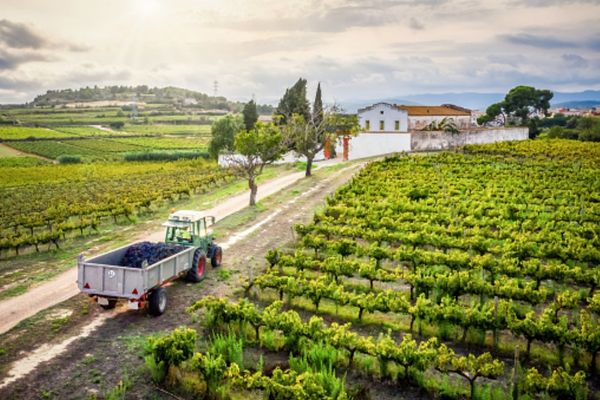Blog
Insights
Weather and Wine

Climate change has various effects, compelling the industry to be flexible and incorporate novel risks into its planning. Some of the increased expenses are a result of climate change.
Winemakers and grape growers worldwide confront extreme weather conditions in every season, with a significant rise in severe weather events such as floods and wildfires that diminish the supply of healthy grapes and endanger vineyards, structures, and long-term productivity.

Impact:
To hedge against future challenges, wineries are strategically planting vines farther north in the Northern Hemisphere and south in the Southern Hemisphere, anticipating warmer growing seasons. Belgium, Norway, and Sweden have experienced an increase in vineyard acreage, with a focus on planting cold-resistant hybrid grape varieties alongside resilient vinifera varieties, such as Riesling.
As winemaking styles evolve in response to changing consumer preferences, grape vines are now being planted with climate resilience in mind. Heat-tolerant grape varieties like grenache or tempranillo may replace cabernet, while Vermentino or fiano could take the place of chardonnay. Despite these changes, winemakers and grape vines are remarkably resilient, making them well-equipped to adapt to whatever Mother Nature has in store.
[[relatedPurchasesItems-49]]
Importance of Climate:
1) Vineyard management practices are contingent on the prevailing climatic conditions.
Furthermore, analyzing long-term weather data can facilitate the identification of patterns and enable the adaptation of vineyard management techniques to address climate fluctuations.
2) Timely weather measurements play a crucial role in making informed decisions regarding vineyard work activities at any given time.
Climate and categories:
1) Looking from the viticulture point, climate can be divided into three categories:
2) The macro-climate pertains to the climate of a broader region, such as a country or a region (typically, high-quality wines are cultivated in Mediterranean, maritime, and continental climates).
3) The meso-climate denotes the climatic conditions of a particular site, shaped by factors such as altitude, distance from the ocean, prevailing winds, and water availability, among others.
4) The micro-climate alludes to the climatic conditions within the vineyard canopy, which are subject to the winegrower's influence through vineyard management practices.
Viticulture and weather:
1) Accurate weather information from the previous few days (near-real-time) is indispensable for making tactical decisions in vineyard management, such as determining the optimal timing for applying sprays to combat grapevine pests and diseases.
2) The weather forecast is another crucial factor that winegrowers consider, as it affects their work in the vineyard. Winegrowers often rely on 1 to 7-day weather forecasts to plan their vineyard work, such as activating wind machines or using other frost protection methods in case of a frost alert.
3) Acquiring micro-climate weather data from different locations (plots) within the vineyard allows winegrowers to customize their management practices for each plot, which is particularly important in varied terrain.
4) Micro-climate data facilitates a better understanding of the vines and the quality of grapes during each growing season, as well as helps winegrowers adjust to climate change.
Written by Rasika Mahajan, Beverage Trade Network
If you're a bulk wine or bulk spirits supplier, contract bottler, or private label producer aiming to connect with serious trade buyers, IBWSS San Francisco is the event you can't afford to miss. Get a quotation or Book a exhibitor table.

